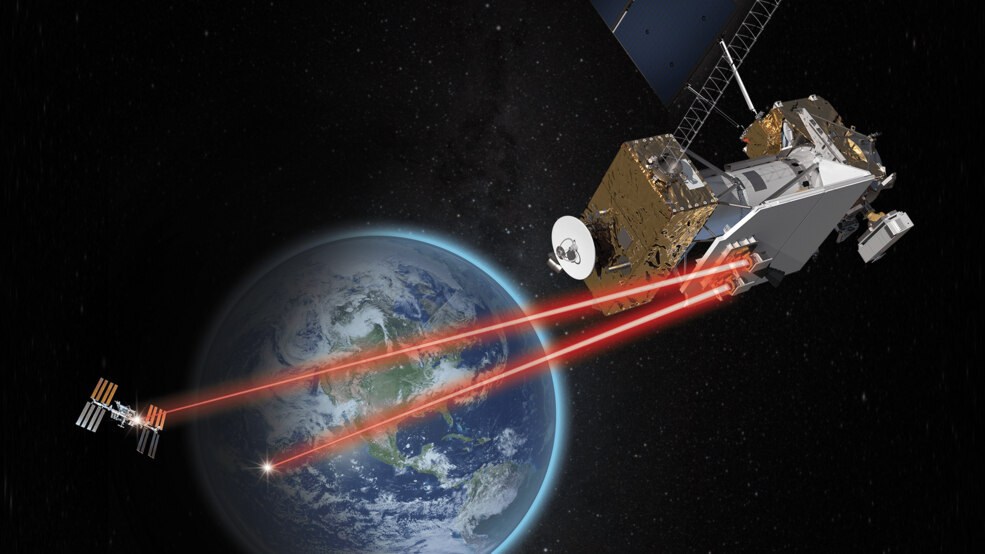NASA demos first two-way end-to-end laser communications system

NASA has achieved a significant breakthrough by creating a two-way end-to-end laser communications relay system. This system is being demonstrated on the International Space Station (ISS), with the Integrated Laser Communications Relay Demonstration Low Earth Orbit User Modem and Amplifier Terminal (ILLUMA-T) featuring as a technology demonstration.
Laser communications use invisible infrared light to send and receive information at higher data rates. This technology allows spacecraft to send more data back to Earth in a single transmission, which speeds up the arrival of data for researchers.
NASA's Space Communications and Navigation (SCaN) program manages this system. The ILLUMA-T payload was launched into space in November 2021 and installed on the ISS's exterior. The optical module of ILLUMA-T, consisting of a telescope and two-axis gimbal, points and tracks the Laser Communications Relay Demonstration (LCRD) satellite in geosynchronous orbit.
ILLUMA-T relays data from the ISS to LCRD at a rate of 1.2 gigabits per second. LCRD then sends the data down to optical ground stations in California and Hawaii. Once the data reaches these ground stations, it is sent to the LCRD Mission Operations Center in Las Cruces, New Mexico. The ILLUMA-T ground operations teams at NASA's Goddard Space Flight Center in Maryland determine whether the data sent through the end-to-end relay process is accurate and of high quality.
The main benefit of this system is that it provides enhanced data rates for experiments conducted on the ISS. By facilitating more data transfer, researchers can achieve more breakthrough discoveries. At 1.2 Gbps, the ILLUMA-T/LCRD end-to-end laser communication relay system can transfer the equivalent amount of data in an average movie in under a minute.
Moreover, this system can help improve network capabilities like delay/disruption tolerant networking (DTN) over laser links and improve navigation capabilities. Laser communications are proving to be an essential technology for NASA's space communications networks and will likely be integrated into the Near Space Network and Deep Space Network.
In conclusion, the ILLUMA-T/LCRD end-to-end laser communications relay system is a significant achievement for NASA. It provides enhanced data rates for critical experiments conducted aboard the ISS and demonstrates the benefits of laser communications systems for both near-Earth and deep-space exploration. This technology will likely soon be integrated into NASA's space communication networks.
If you are a mission planner interested in using laser communications, please reach out to the Space Communications and Navigation program at NASA Headquarters in Washington.

 How to resolve AdBlock issue?
How to resolve AdBlock issue?